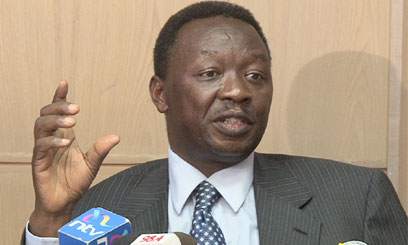NAIROBI, Kenya, Jul 25 – The government has signed support guarantees with Independent Power Producers (IPPs) paving the way for the generation of extra electricity to meet the current rising demand for energy in the country.
Kenya Power Managing Director and Chief Executive Officer Eng Joseph Njoroge disclosed on Monday that through the World Bank, the government has been able to secure payment securities which provide insurance against political risks to the IPPs undertaking the projects.
“The IDA (International Development Association, which is the World Bank’s concessionary loan window) and MIGA (Multi Lateral Investor Guarantees Agency) guarantees have more or less been concluded and so we should be seeing work (generation of power) starting,” revealed the CEO.
These guarantees are some of the instruments that the World Bank uses to protect repayment of loan against non performance by the host country’s side contractual obligations such as termination payments.
Power generation had been delayed for months after the government rescinded its decision to offer sovereign guarantees to the private investors because such an action would have not only increased the country’s debt but also limited the government’s ability to borrow from the international markets.
“The government thought it was not wise to do that (issue sovereign guarantees) and it came up with an alternative solution but unfortunately, this process took a bit of time” he admitted.
The delay in commissioning of new diesel power generators which would have seen more than 250 Megawatts (MW) of electricity injected into the national grid has unfortunately resulted in power shortage.
This setback was compounded by a breakdown of some power generating machines belonging to various power generators that supply between 70 to 90 MW of electricity grid per day as well as the unavailability of the contracted 26 Megawatt MW from Mumias Sugar company’s co-generation plan.
The combination of all these factors has in turn forced the utility firm to roll out an indefinite rationing program that will mostly affect several industrial zones in Nairobi, Western, Mt Kenya region and some parts of Eastern Provinces. Coast Province will however not be affected as most of the generation is undertaken in this area.
The power supply management program will be implemented on a rotational basis from 6.30 pm and last up to 9.30pm to relieve the load experienced at this time.
The highest recorded peak demand at this time is 1190 MW, a figure that is attributed to the increased consumption by domestic users.
However, unlike previous instances when Kenya Power has had to ration power, this month’s plan will not be implemented in residential areas.
“We have avoided most of the residential areas because of security concerns and so this is unlike what we have had in the past. It is a management program and we want to ensure that we do not switch people off when we have not told them that we will,” he argued.
The MD could not however quantify how much power they expect to save in this initiative, which kicks off on Wednesday.
Eng Njoroge was however quick to assure that the load shedding plan would not be extended either to cover more areas or through longer hours.
Adequate measures that will ensure enough generation of power into the grid in the next few months have already been put in place, he emphasised.
For instance, a total capacity of 252 MW is expected to be produced from the installation of three diesel power generators in Athi River and Thika. An additional 60 MW plant will come on stream in the next two to three months in Muhoroni which should help to meet the power challenges in the Western part of the country.
These efforts however will get a boost from the various green energy projects that are currently being undertaken across the country and which upon completion in the next few years are expected to inject more than 500 MW into the national grid.




































